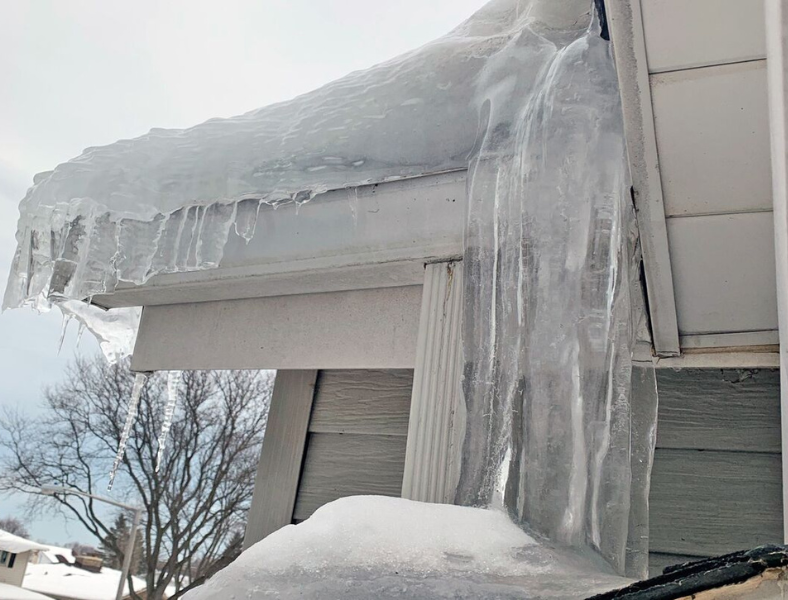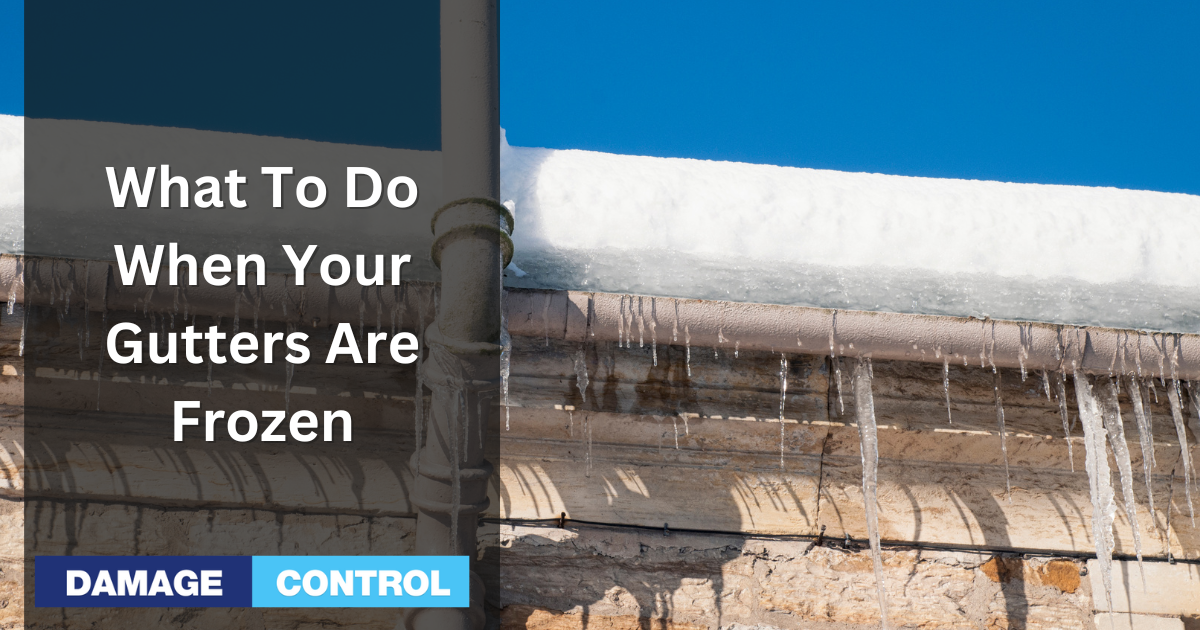Gutters, huh? We all know they're important, but who knew they could freeze? In this guide, we'll dive deep into frozen gutters. Learn how to spot them, fix them, and prevent them. We'll cover everything from understanding gutters to the effects of ice on them. So, grab a cup of hot cocoa and get started!
Understanding Gutters and Freezing
How gutters work
Gutters catch rainwater. They help protect our homes. Simple, right? They channel water from the roof, sending it down the downspouts and away from your home. This protects your walls, foundation, and landscaping. But what happens when they freeze?
Why gutters freeze
Water trapped inside? Freezing temps outside? You get ice. It's not rocket science. When temperatures drop, any water or debris in the gutters can freeze. This can cause a whole host of problems. Keep reading to find out more.
The effects of ice on gutters
Ice is heavy. Heavy ice damages gutters. And when gutters are damaged, they can't do their job. The extra weight can cause them to sag or pull away from your home. Ice dams can also form, leading to leaks and water damage. So, what can we do to prevent this?
Preventing Frozen Gutters

Don't let frozen gutters put a damper on your winter. Follow these steps to prevent freezing:
Proper gutter installation
Ensure your gutters are correctly installed. Sloping them toward the downspouts and securing them to your home will help water flow away quickly, reducing the time it has to freeze.
Regular gutter maintenance
Make it a habit to clear out debris, leaves, and twigs from your gutters. Regular maintenance prevents blockages and ice buildup, keeping your gutters functioning smoothly.
Adding gutter guards
Gutter guards keep debris out, making it easier to maintain clean gutters. This reduces the likelihood of ice buildup and freezing.
Heat tape installation
Heat tape installation is a simple and effective way to prevent freezing. It works by warming your gutters and downspouts, melting ice before it can accumulate.
By following these prevention tips, you can keep your gutters flowing smoothly and avoid the headache of frozen gutters.
Signs of Frozen Gutters
It's essential to watch for signs of frozen gutters to prevent water damage and other issues. Here are the most common signs:
Visible ice dams
Ice dams are ridges of ice that form along the edge of your roof, blocking water and causing it to back up. Seeing these sneaky troublemakers is a clear sign that your gutters are frozen.
Overflowing water
If water spills over the sides of your gutters, they're likely blocked or frozen. This can cause water damage and other issues, so addressing the problem promptly is essential.
Sagging gutters
Ice is heavy, and if your gutters are sagging, it could be due to the weight of the ice. This can cause damage to your gutters, roof, and home. Take action and safely remove the ice to prevent further damage.
Icicles
Icicles hanging from your gutters or roof edges may be beautiful, but they also indicate frozen gutters. Don't be fooled by their beauty – thaw those gutters to prevent damage to your home.
By watching these signs, you can catch frozen gutters early and prevent costly repairs.
Safe Ice Removal Techniques
Removing ice from your gutters is essential to prevent damage to your home. Here are some safe ice removal techniques to try:
Using a roof rake
A roof rake is like a giant snow shovel that helps you clear snow and ice from your roof. This makes it easier for water to flow away and prevents ice dams from forming.
De-icing products
De-icing products help break down ice in your gutters. Choose a safe product for your roof and gutters, and follow the manufacturer's instructions carefully.
Steam thawing
Use a steamer to melt ice without damaging your gutters. This method is effective and safe, as steam and ice are hot. Be sure to use a steamer designed for ice removal, and follow the instructions carefully.
Hiring a professional
If you're uncomfortable removing the ice yourself, hiring a professional is best. They have the tools and expertise to safely and effectively remove ice, preventing damage to your gutters, roof, and home.
By using safe ice removal techniques, you can protect your home and avoid costly repairs.
What NOT to Do When Dealing with Frozen Gutters
Dealing with frozen gutters can be frustrating, but it's important to avoid these common mistakes:
Using boiling water
Boiling water might seem like a quick fix for frozen gutters, but it can do more harm than good. The extreme temperature change can crack your gutters or cause them to warp, leading to costly repairs. Avoid using boiling water and, instead, use safe removal techniques.
Using a hammer or other tools
Hammers, chisels, and other tools might seem like a good idea, but they can damage your gutters. Using force to remove ice can dent or puncture your gutters, leading to expensive repairs. Stick to safe removal techniques like a roof rake or de-icing products.
Ignoring the problem
It might be tempting to ignore frozen gutters, especially if they don't seem like a big deal. But neglecting frozen gutters can lead to serious issues. Water damage, mold, and even structural damage are all possible outcomes of neglected gutters. It's essential to address the problem promptly to prevent costly repairs.
Remember, using unsafe removal techniques or ignoring the problem can lead to even more problems. Play it safe and use proper removal techniques, or hire a professional to remove the ice for you safely. By avoiding these common mistakes, you can protect your gutters, roof, and home from damage.
Addressing Gutter Damage
Gutter damage can be a headache, but addressing it promptly can prevent more extensive damage. Here are some steps to take when dealing with damaged gutters:
Assessing the extent of the damage
Sometimes, the damage is too severe to fix. In these cases, you might need to replace your gutters. But before you do, assess the damage to determine possible repairs. Look for signs of rust, cracks, or holes that could cause leaks.
Repairing vs. replacing gutters
If the damage is minimal, repairs might be the way to go. Small holes or cracks can often be patched up with sealant or a patch kit. But replacement might be necessary if your gutters are old or extensively damaged. Consider the age of your gutters and the extent of the damage when making this decision.
Working with a gutter professional
Gutter professionals can advise on the best action for your damaged gutters. They can assess the damage and determine if repairs or replacements are necessary. If replacement is required, they can help you choose the right gutters for your home and perform the installation safely.
Remember, ignoring damaged gutters can lead to more extensive damage to your home. It's essential to address the problem promptly and take steps to prevent future damage. By working with a gutter professional and considering repair vs. replacement options, you can ensure your gutters are functioning correctly and protecting your home.
Planning for Future Winters
Preventing frozen gutters starts with planning. Here are some steps to take to prepare for future winters:
Upgrading your gutter system
If your gutters are old or outdated, consider upgrading to a newer, more efficient system. Newer systems are designed to resist freezing and other weather-related damage. They can also be equipped with de-icing features to prevent ice buildup.
Insulating your attic
Proper insulation can help prevent heat loss, keeping your roof and gutters warmer during winter. This can reduce the risk of freezing and other weather-related damage. Adding insulation to your attic is a relatively easy and affordable way to improve your home's energy efficiency.
By taking these steps, you can prepare your home for future winters and reduce the risk of frozen gutters. Upgrading your gutter system and insulating your attic are smart investments that can help you save money on energy bills and prevent costly repairs.
Installing a heat cable
A heating cable is a simple, effective way to keep your gutters ice-free. It runs along the length of your gutters, melting any ice that forms.
Conclusion
Frozen gutters might seem like a minor inconvenience, but they can cause serious damage to your home. You can protect your home and wallet by understanding how gutters work, preventing freezing, and safely removing ice. Remember, a little prevention.

